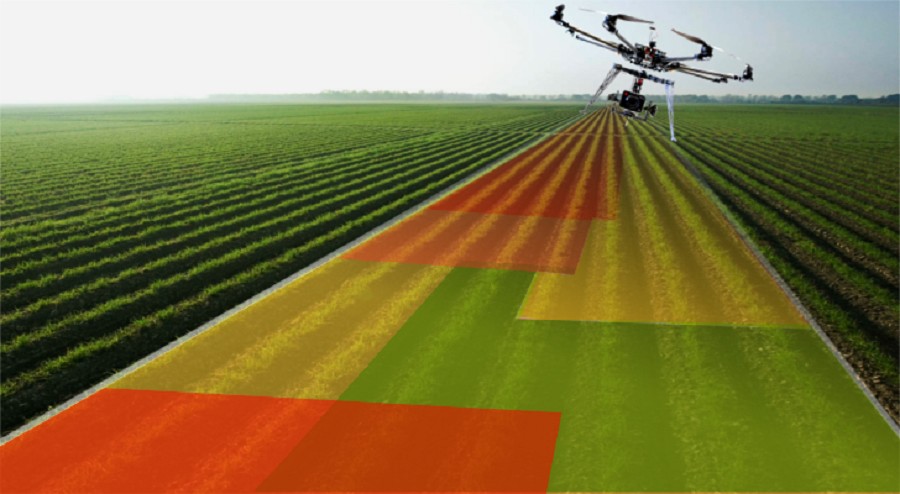NDVI Mapping with Drones
Agricultural Drones
Agricultural Drones, what next?
It wasn’t long ago that drones were known as a type of military plane for special operations, little did we know then that there would soon be agricultural drones let alone be as accessible to the public as they are today. Flying cameras to capture extraordinary still or video imaging are now available to the every day person.
Today’s agriculture has transformed into a high-tech enterprise that most 20th-century farmers might barely recognize. After all, it was only around 100 years ago that Australian farmers transitioned from animal power to combustion engines. Over the past 20 years the global positioning system (GPS), electronic sensors and other new tools have moved farming even further into a technological wonderland.
And as amazing as today’s technologies are, they’re just the beginning. Self-driving machinery and flying robots able to automatically survey and treat crops could become commonplace on farms that practice what’s come to be called precision agriculture. The ultimate purpose of all this high-tech gadgetry is optimization, from both an economic and an environmental standpoint. We only want to apply the optimal amount of any input (water, fertilizer, pesticide, fuel, labour) when and where it’s needed to efficiently produce high crop yields.
Precision Agriculture requires three things to be successful. It needs site-specific information, which the soil-fertility map satisfies. It requires the ability to understand and make decisions based on that site-specific information. Decision-making is often aided by computer models that mathematically and statistically analyse relationships between variables like soil fertility and the yield of the crop.
Site-specific information goes far beyond maps of soil conditions and yield to include even satellite pictures that can indicate crop health across the field. Unmanned aerial vehicles (UAVs, or drones) can collect highly detailed images of crop and field characteristics. These images, whether analysed visually or by computer, show differences in the amount of reflected light that can then be related to plant health or soil type, for example. Clear crop-health differences in images have been used to delineate the presence of cotton root rot, a devastating and persistent fungal disease. Once disease extent is identified in a field, future treatments can be applied only where the disease exists. Advantages of UAVs include relatively low cost per flight and high image detail, but the legal framework for their use in agriculture remains under development.
High-Throughput Plant Phenotyping(HTPP) is an up-and-coming precision agriculture technology at the intersection of genetics, sensors and robotics. It is used to develop new varieties or “lines” of a crop to improve characteristics such as nutritive content and drought and pest tolerance. HTPP employs multiple sensors to measure important physical characteristics of plants, such as height; leaf number, size, shape, angle, colour, wilting; stalk thickness; number of fruiting positions. These are examples of phenotypic traits, the physical expression of what a plant’s genes code for. Scientists can compare these measurements to already-known genetic markers for a particular plant variety.
The sensor combinations can very quickly measure phenotypic traits on thousands of plants on a regular basis, enabling breeders and geneticists to decide which varieties to include or exclude in further testing, tremendously speeding up further research to improve crops. The Matrice 100 by DJI is the perfect drone to build a platform for your tailor made agricultural drone Click here.
Agricultural production has come so far in even the past couple decades that it’s hard to imagine what it will look like in a few more. But the pace of high-tech innovations in agriculture is only increasing. Don’t be surprised if, 10 years from now, you drive down a road and see a small quadcopter flying over a field, stopping to descend into the crop, use robotic grippers to manipulate leaves, cameras and machine vision to look for insects, and then rise back above the crop canopy and head toward its next scouting location. All with not a human being in sight.

